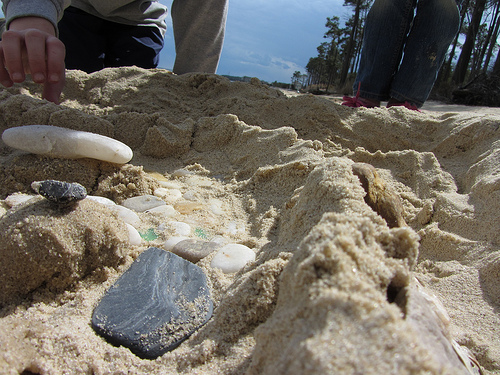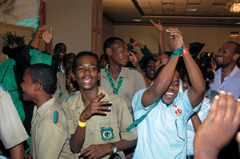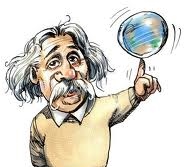What’s All the Buzz About Connecting Art and Math?
What is all of this chatter on the rise about connecting art and math? For starters, it’s awesome for students. Haven’t heard about it yet? Here’s the rundown.
 It was time to put a bit of STEAM into STEM
It was time to put a bit of STEAM into STEM
STEAM is an educational philosophy developed a few years ago that is gaining ground quickly across the country and around the world. Most of us are familiar with the concept of STEM (Science, Engineering, Technology and Mathematics). This movement was driven by research that suggested that American students were falling behind, severely, in the areas of science, engineering, math and technology. Even though many people disagree on Common Core and different testing forms that have been piloted, it is safe to assume most would agree that STEM is important.
Read more of what prompted the STEM movement to take hold.
So what is STEAM?
Artists rejoice. STEAM is simply STEM plus Art. The concept is one that predates the strong foothold of the STEM movement but it is gaining more ground in today’s educational climate. It’s important to understand that STEAM is not a set curriculum or program but an educational philosophy. According to stemtosteam.org the objectives of STEAM are to:
- “transform research policy to place Art + Design at the center of STEM”
- “encourage integration of Art + Design in K-20 education”
- “influence employers to hire artists and designers to drive innovation”
At the heart of it, is the idea that creativity and design are essential to putting science and mathematics to work, and this requires another form of a thinking. So we need to build those skills, harness that creative energy, to innovate.
Why talk about it now?
More and more people are fully embracing the idea that the arts, essentially the human arts and humanities are a necessary part of producing a strong labor and professional workforce. So are we coming full circle? 360 degrees. Maybe.
We can solve a lot of problems, or at least move more quickly towards multiple solutions when we understand a problem can have more than one solution. Or understand how much we can learn while taking multiple approaches towards one goal. That kind of thinking is developed through the human arts and design. Student research assistants at Rhode Island School of Design (RISD) work applying “their firsthand knowledge of Art + Design education exploring new avenues for STEM and STEAM.”
As a matter of fact, PBL (project based learning) and STEAM education make sense together. We can’t solve real world problems with math or science alone. The students need critical thinking skills and practice in collaboration. Project based learning focuses on experience. To check out a few examples of what this can look like read this contribution from Andrew Miller to Edutopia.
Problem based learning, which some define as an offspring of project based learning has its benefits to teaching and learning math. The projects can be more focused, not as long term as other project based learning models etc. As a matter of fact, whether you are an educator, parent, student, education student, or a combo of these, sorting out the differences with all of these acronyms and models you read about can be tricky. This piece written by John Larmer, the editor in chief at the Buck institute for Education is a fabulous breakdown for everyone interested/confused.
 The Math and Art Connection
The Math and Art Connection
If you’re not convinced as a parent or educator that we should be working to develop more connections between math and art and design, check out this fantastic collection of case studies from stemtosteam.org. You will learn that because these connections exist in real life work and have since the beginning of mathematical thought and design, it makes perfect sense to help kids make these connections.
Even Pixar is getting in on the action. Check out this article from KQED ‘s Mind Shift blog:
Pixar In A Box Teaches Math Through Real Animation Challenges
Resources for Parents and Educators
When I was growing up I had a friend whose dad was a little different. He would shoot basketball with us and teach us geometry while we played. If we were all stargazing he would give us similar lessons. At the time it seemed kind of odd. But he was a tool and die maker and understood the connections between mathematics and engineering. When he started talking trig we usually tried to change the subject. Later when I got in a trigonometry class, guess who I went to for help?
If we are going to talk about what kids need why not find out from the kids? So what is it that kids want out of their education?
- for subjects to connect to one another to help build understanding
- the experience of learning
- doing different things more often instead of repetition
- make work more interesting
- having qualified tutors for help
This list is compiled from student voices from Oakland and Menlo Park. Tina Barseghian of KQED and NPR education correspondent Eric Westervelt went to ask the students themselves what they want out of their education and what can make school better.
Georgette Yakman began working on STEAM as an educational theory and practice in 2006. She works as an educational consultant. Watch her story:
This discussion wouldn’t be complete without bringing John Maeda into the conversation. He is the former president of Rhode Island School of Design, one of the driving forces behind the transformation from STEM to STEAM. He has spoken at TED on a few different occasions. Watch this talk filmed in June 2012.
Want to know more? Check out these resources and learn what others are doing to integrate a STEAM focus into education and how others are working to enhance and develop a holistic approach to math and science education.
STEM to STEAM: Art in K-12 Is Key to Building a Strong Economy – John Maeda
STEM to STEAM: Resource Roundup – Edutopia
Five-Minute Film Festival: Arts Integration Turns STEM to STEAM – Edutopia
STEAM resources and connections is a great place for educators to locate scholarship and research.
There are free curriculum resources, paid services, and a new community forming at eudcationcloset’s steamportal
13 Art and Math Projects for Kids – The Art Curator for Kids
Math in Art: a round up of 18 STEAM projects – 4MULAFUN – Jennifer Smith Sloane
What kinds of projects have you been involved with blending math and the arts? Leave a comment and tell us what you are doing.

The Miracle Math and Study Skills Coaching Program, winner of the 2014 Math Coaching Center of the Year Award, can help your child improve their grades and boost their academic achievement, too. Contact us today.
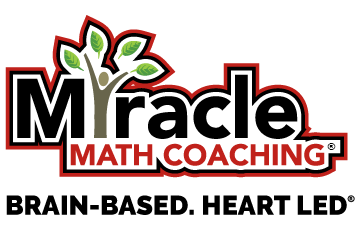
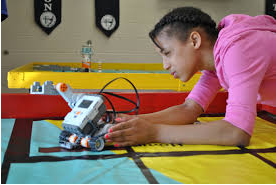
 It was time to put a bit of STEAM into STEM
It was time to put a bit of STEAM into STEM  The Math and Art Connection
The Math and Art Connection

